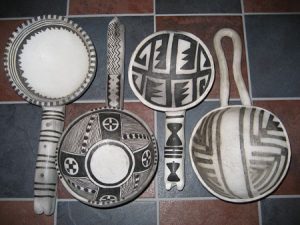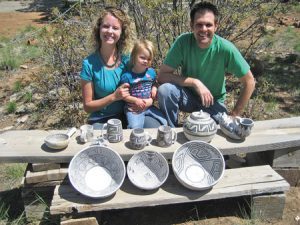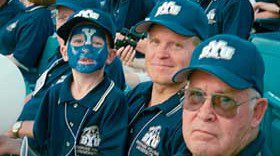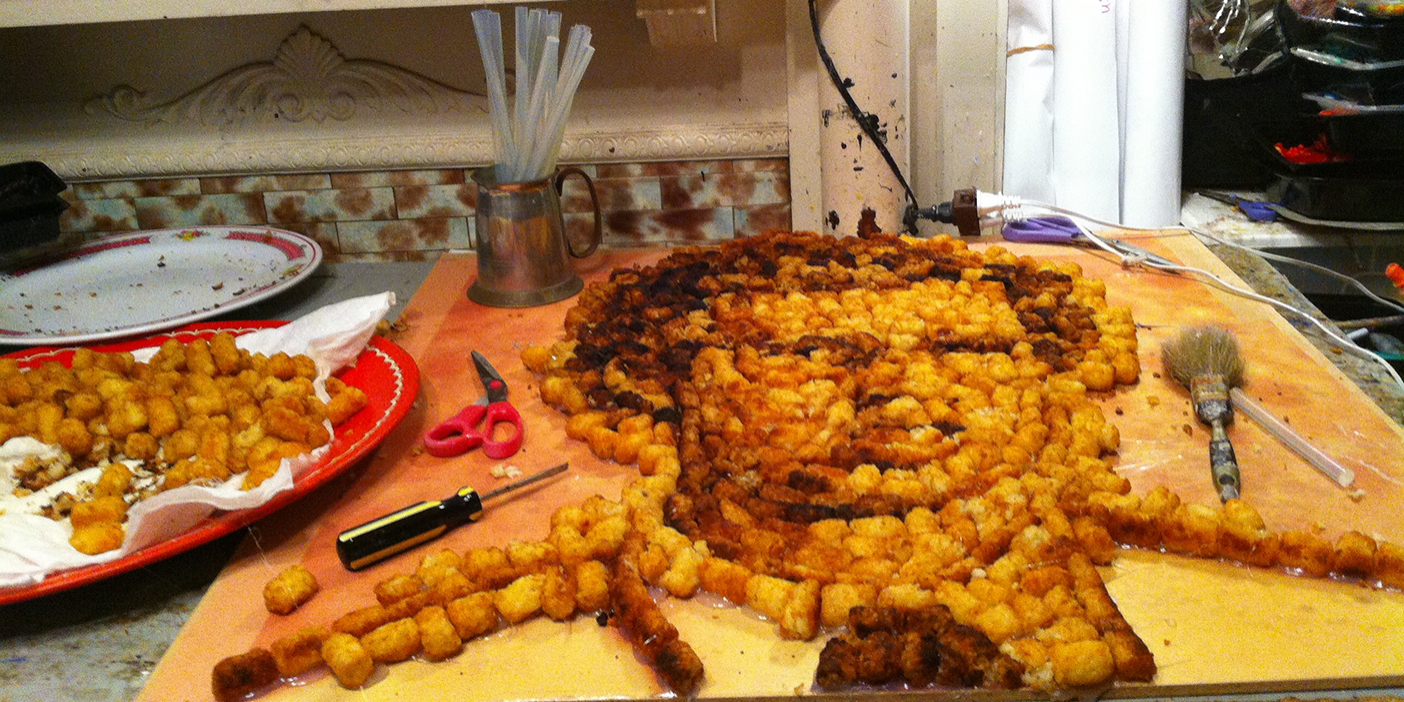While others might turn on the television to unwind after work, dentist Christian R. Anderson (BS ’03) prefers to dig in the New Mexico desert. He collects gray clay, which, up to 50 hours of work by Anderson later, becomes Anasazi-style pottery—fired, intricately detailed, and, in many ways, authentic.

Mentored by a master pottery maker, Christian Anderson has learned the key to achieving the distinctive whites and blacks found in Anasazi pottery. It involves smothering the firing pottery with dirt at precisely the right moment.
Anderson is one of just a handful of Anasazi pottery makers in the world, artisans who attempt to replicate the precise patterns of the ancient southwestern American Indian tribe, believed to have divided into various other tribes some 800 years ago.
He first saw Anasazi pottery in the 1980s while backpacking with his father in Canyonlands National Park. When he later moved to New Mexico for his dental practice, he wanted a few Anasazi pieces to decorate his home but found that “the real pottery is really expensive.”
So Anderson bought a how-to book about Anasazi pottery and later contacted the author, Clint Swink. They became friends, and Anderson now works as Swink’s apprentice. Together, the men have worked to rediscover the Anasazi’s lost techniques for making pottery.
“We’re pretty sure our way is the way they did it,” Anderson says, “because when we get our final product, it looks just like theirs.”
Swink and Anderson first dig up carbonaceous clay and grind it by hand. They mix this powder with water and crushed rock to form a paste for molding. After shaping the pottery, they cover it with a thin layer of volcanic slip clay before adding bee plant paint with handmade yucca plant brushes. Finally, the pottery is fired at 800 to 1,000 degrees centigrade in a pit with a sandstone base.

Anderson, pictured here with his wife, Gina, and his daughter, spends up to 50 hours to create an Anasazi pottery replica.
The trick is achieving the distinctive black-and-white colors. Archeologists have long thought this required an air-tight environment, which would have been difficult for the Anasazi to create. Swink’s approach is to preserve an “air-neutral atmosphere” by smothering the pottery and fire with dirt at precisely the right moment.
While he sells a few pieces, Anderson considers pottery making more of a creative outlet than a business. Anderson’s personal collection contains mugs, bowls, vases, plates, and jars of various shapes and sizes, all painted with detailed geometric patterns in high-contrast white and black.
For designs, Anderson finds a pottery fragment in a museum display and recreates the complete piece. “Everything I do is a replica of a real pot.”
Anderson loves the simplicity of pottery making. “It’s wonderful that you can take dirt, clay, and rocks and throw them into a fire and [create] this thing that lasts essentially forever,” he says.









